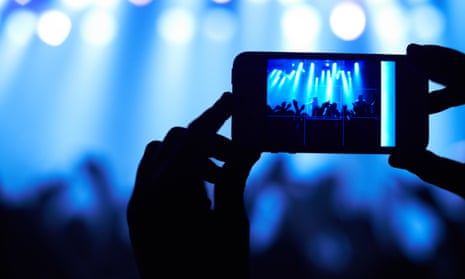House Democrats were able to garner wall-to-wall media coverage of their sit-in by broadcasting live from a congressman’s smartphone on 23 June. Yet that may not be possible in the future if a new patent recently granted to Apple is an indication of technology restrictions to come.
The patent shows that Apple may allow iPhone cameras to be disabled through special infrared sensors, giving the example of a concert venue using the technology to make sure no one makes bootleg videos of a touring band.
“An infrared emitter can be located in areas where picture or video capture is prohibited,” the patent reads. “An electronic device can then receive the infrared signals, decode the data and temporarily disable the device’s recording function based on the command.”
The technology could also be used to beam information to a lot of people’s phones at the same time when they’re in the same location, Apple says, such as people touring the art installments in Chicago’s Millennium Park.
The idea at first seems logical enough. Apple’s wildly popular phone has become a nuisance at plays, concerts, museums and places of worship as owners now feel they need to use them to document just about anything. Who wants their flagship product to be the enabler of the annoying, much less violators of copyright law?
But since Apple first filed for this patent in 2009, the idea understandably has raised eyebrows among freedom of expression advocates.
If Apple creates a way for third parties to control when certain iPhone features work, how will Apple control who has access to that technology? It’s not hard to imagine a government such as Turkey or Russia using it to blackout social media coverage of a protest.
Or better yet, when US speaker of the House Paul Ryan turns off all of the television camera’s in the House chamber?
Last week’s sit-in originally began as an effort by Democrats to hold the floor of the US House to tell Americans about why people who are on the government’s controversial no-fly list – shorthand for possible terrorism links – also shouldn’t be allowed to buy guns.
Ryan, in a moment of both real and digital politick, threw the House into recess and shut down the video feed from the broadcast cameras in the chamber. The cable channel C-Span uses the cameras to broadcast (often boring) unedited footage from the capitol.
When Democrats realized the cameras were dark, they turned to one congressman’s iPhone to broadcast themselves through Twitter’s Periscope app. C-Span picked up the congressman’s feed.
Apple’s proposed technology, if built, could easily have come into play here. As visitors to the US Capitol know, smartphone use – even for Instagram – is banned in the House and Senate chambers.
And if the speaker of the house’s office controls when C-Span’s cameras are live, it’s not a stretch to assume it would control when iPhones can work.

Comments (…)
Sign in or create your Guardian account to join the discussion